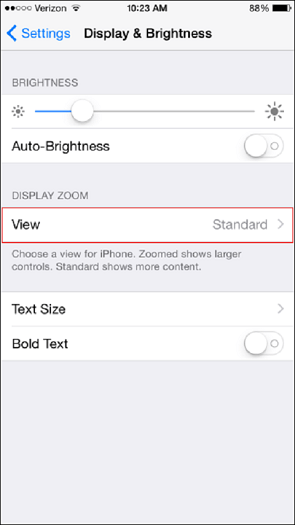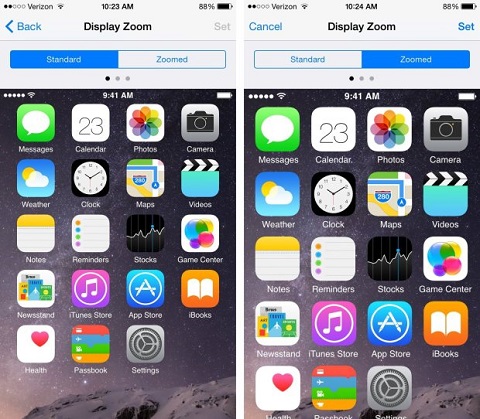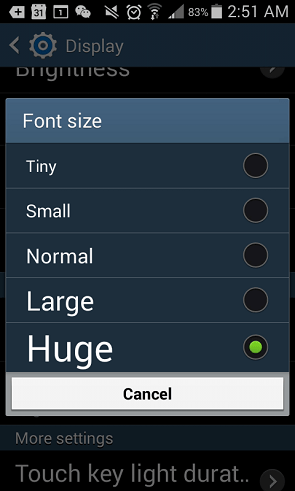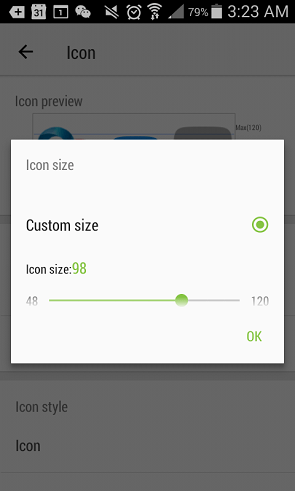2. Boost the Size of Icons and Text
With the release of iPhone 6, Apple finally joined the trend of manufacturing smartphones with huge screens. It included a handy way to enlarge text and icons to take advantage of the larger display — and happens to be a great way to improve visual accessibility for seniors.
Activate Display Zoom (distinct from temporary magnification) via Settings > Display & Brightness > View.

The view is set to Standard by default. Tapping on Zoomed will enlarge icons and text displayed systemwide.

There is currently no way to permanently increase the size of icons on iPad devices without using temporary magnification.
To boost the size of text, go to Settings > Display & Brightness > Text Size and then drag the slider all the way to the right. To make it even bigger, go to Settings > General > Accessibility > Larger Text, then set the switch to On.
On Android devices, increased the font size via Settings > Display > Font size.

Unlike Apple, different Android hardware manufacturers each release their own proprietary versions of launchers — the components of the user interface related to the app drawer and home screens — and most do not include a way to permanently increase the size of icons.
GO Launcher is an excellent solution that you can download to overcome this. Its rich set of customization features includes a way to enlarge icons, making it ideal for elderly users though its typical users are younger.
Once the app is installed, to change the size of icons displayed on home screens, go to GO Settings > Personalization > Icon > Icon size and tap Recommended size (big). You can also drag the slider to play with the icon size until it looks good on the specific device.

To enlarge icons on the desktops of Windows devices, right-click anywhere on the desktop and go to View > Large icons.
![]()
To increase the system font size, go to Control Panel > Display and pick Medium (125 percent) or Larger (150 percent).


Comments are closed.